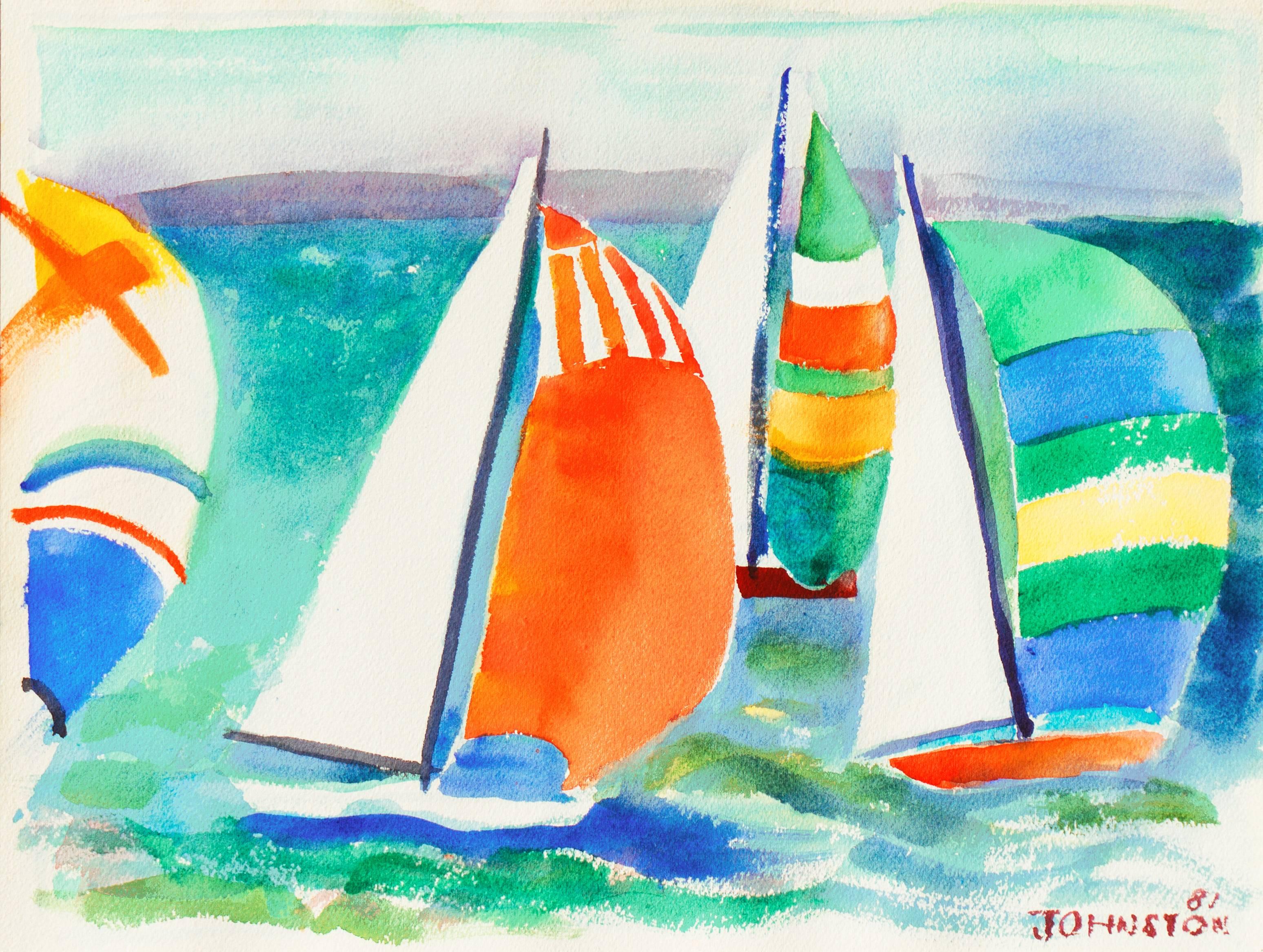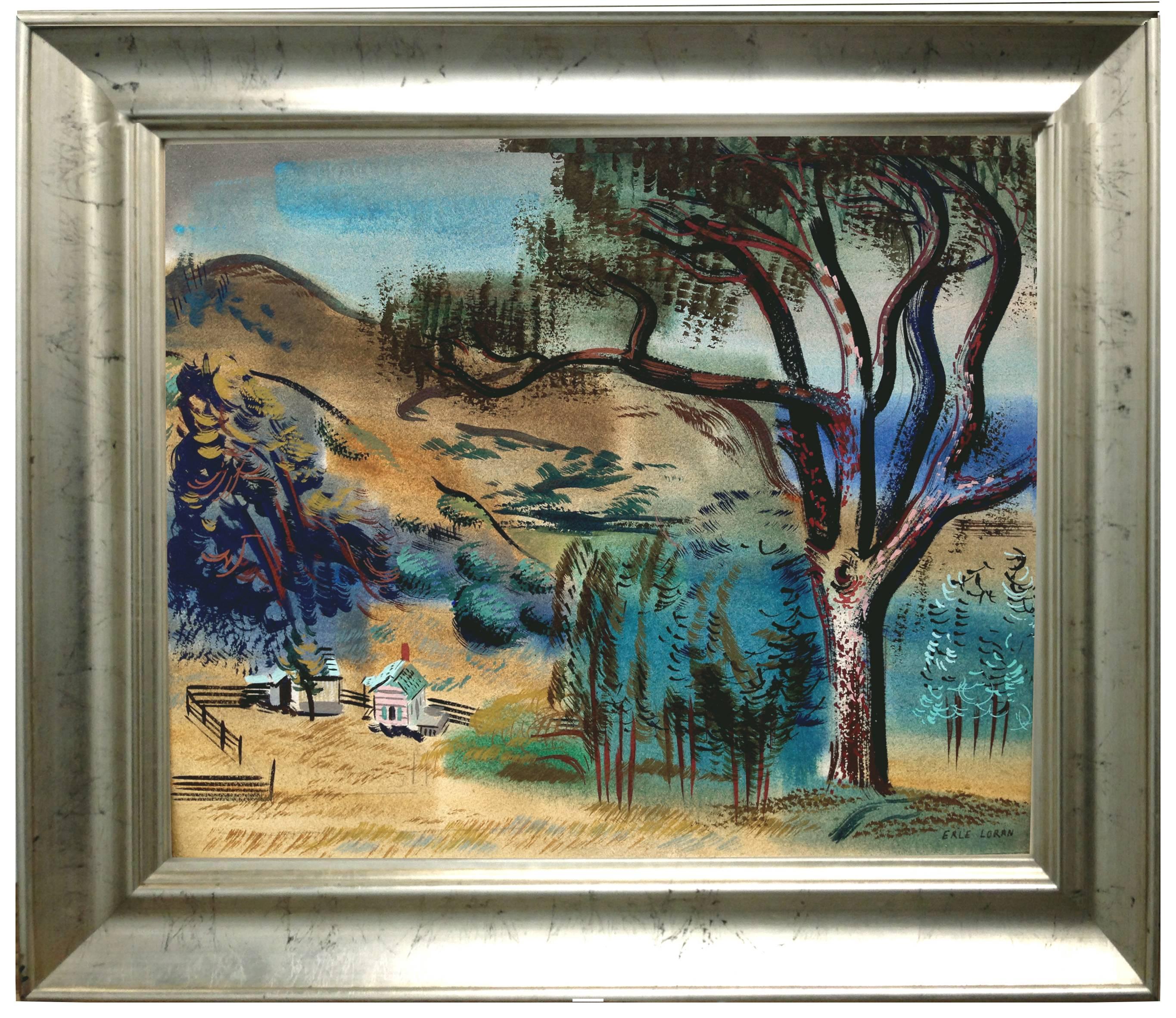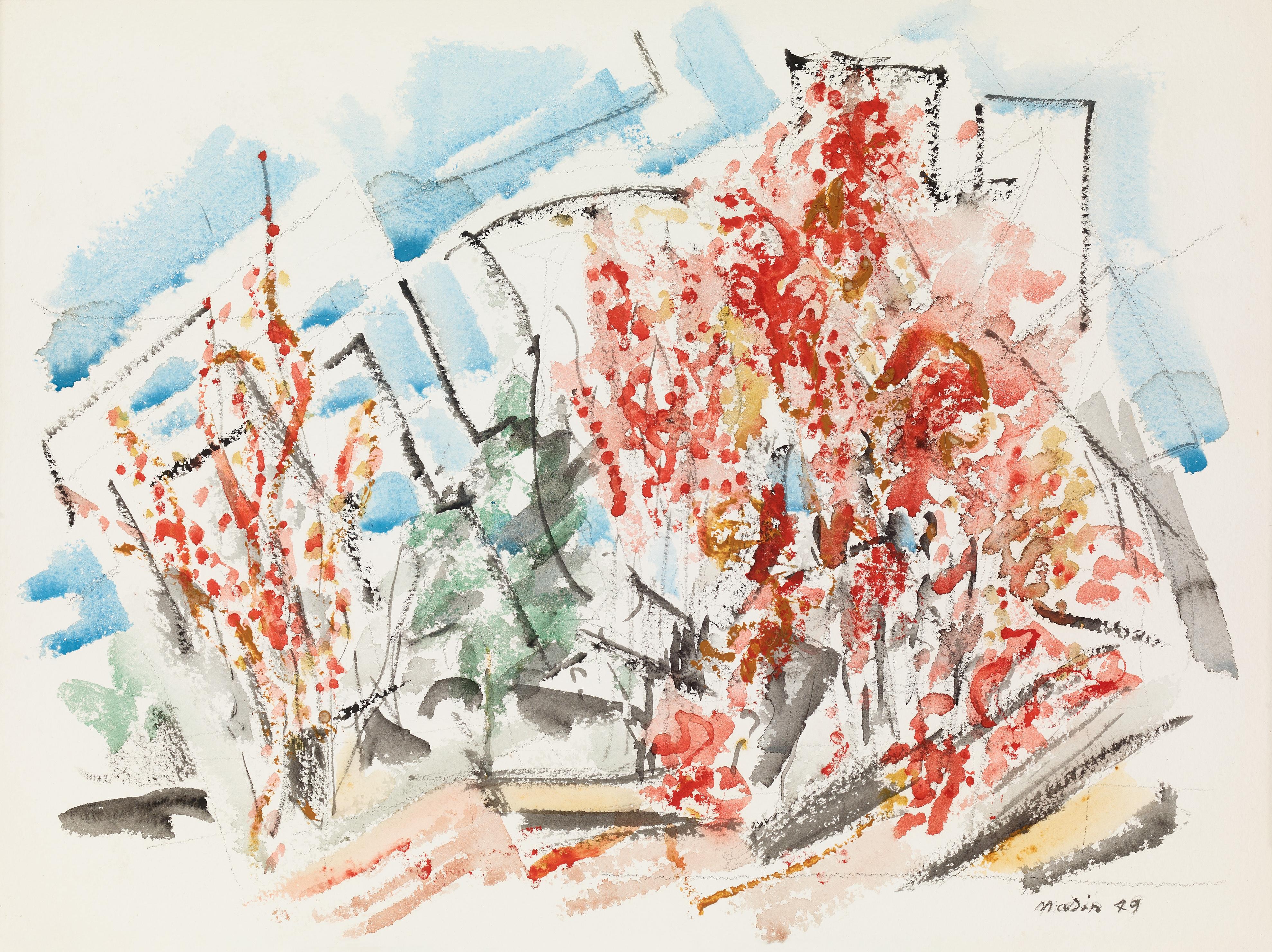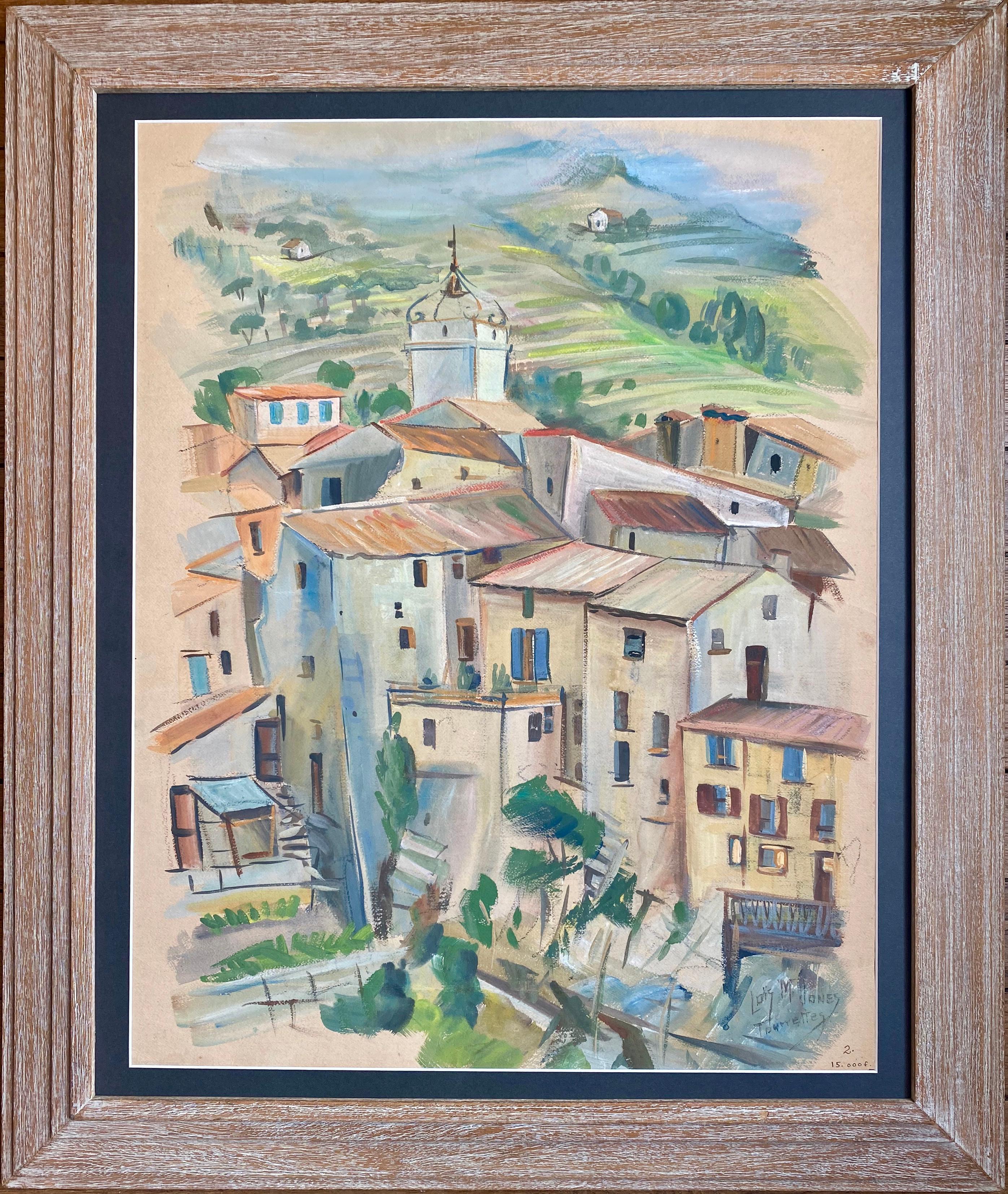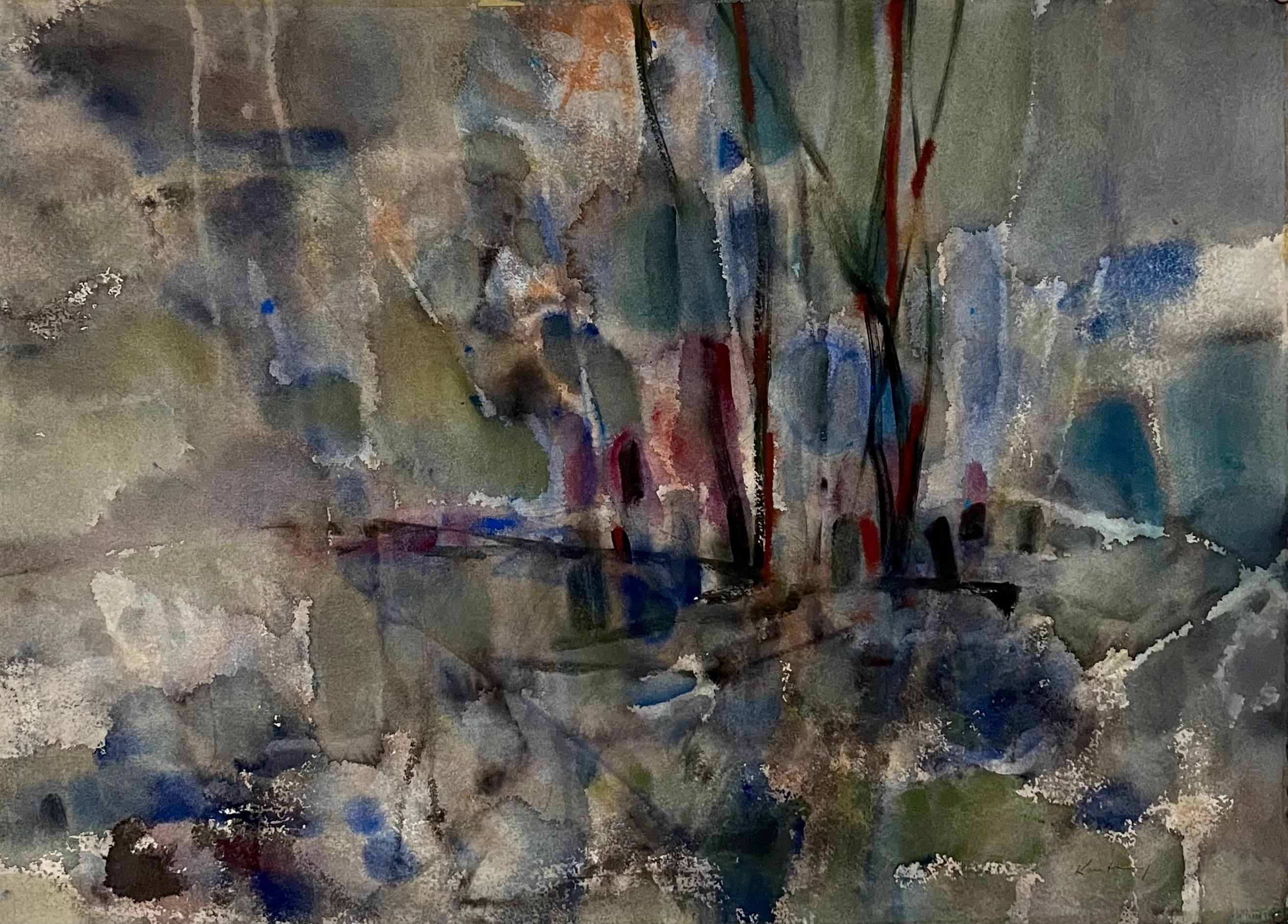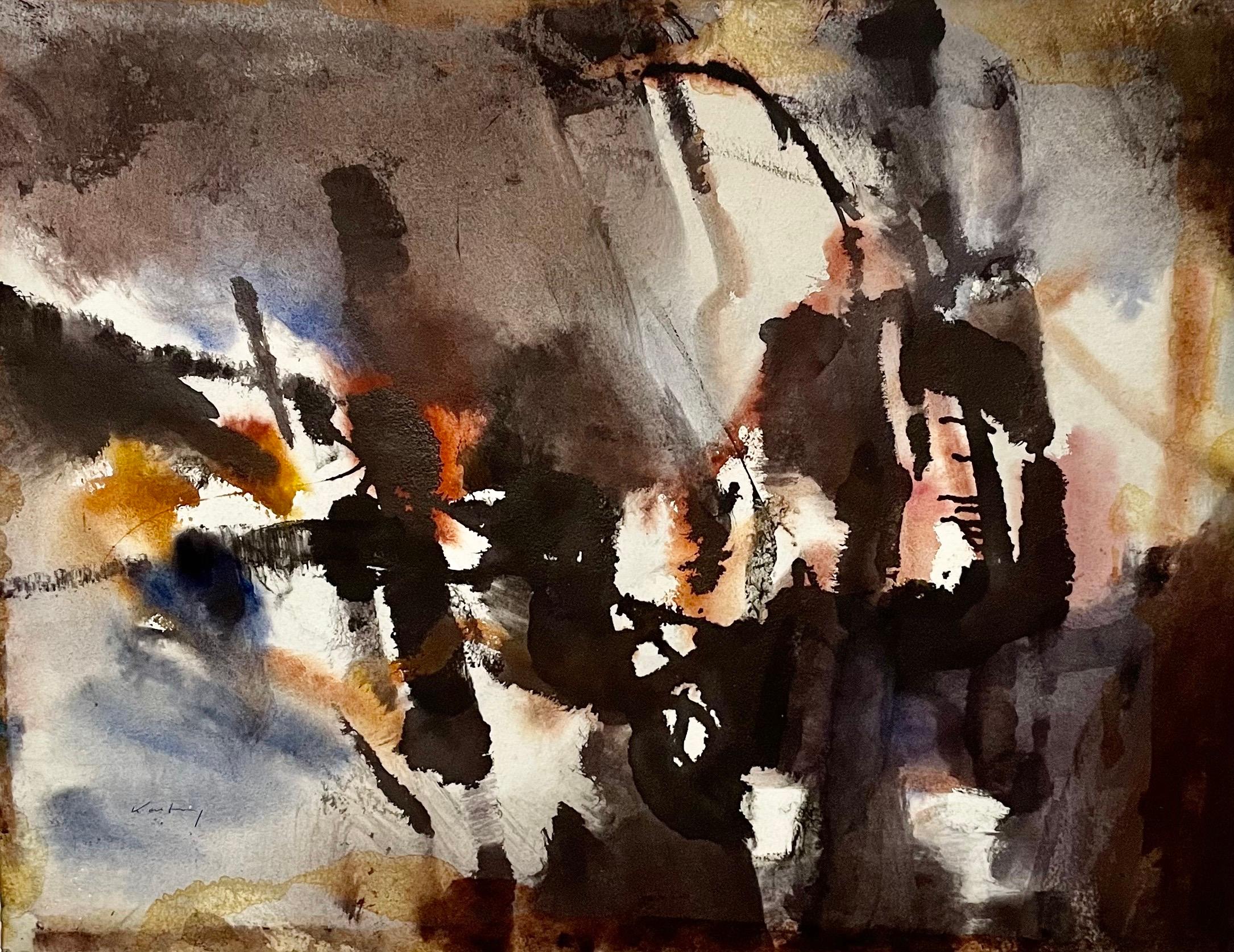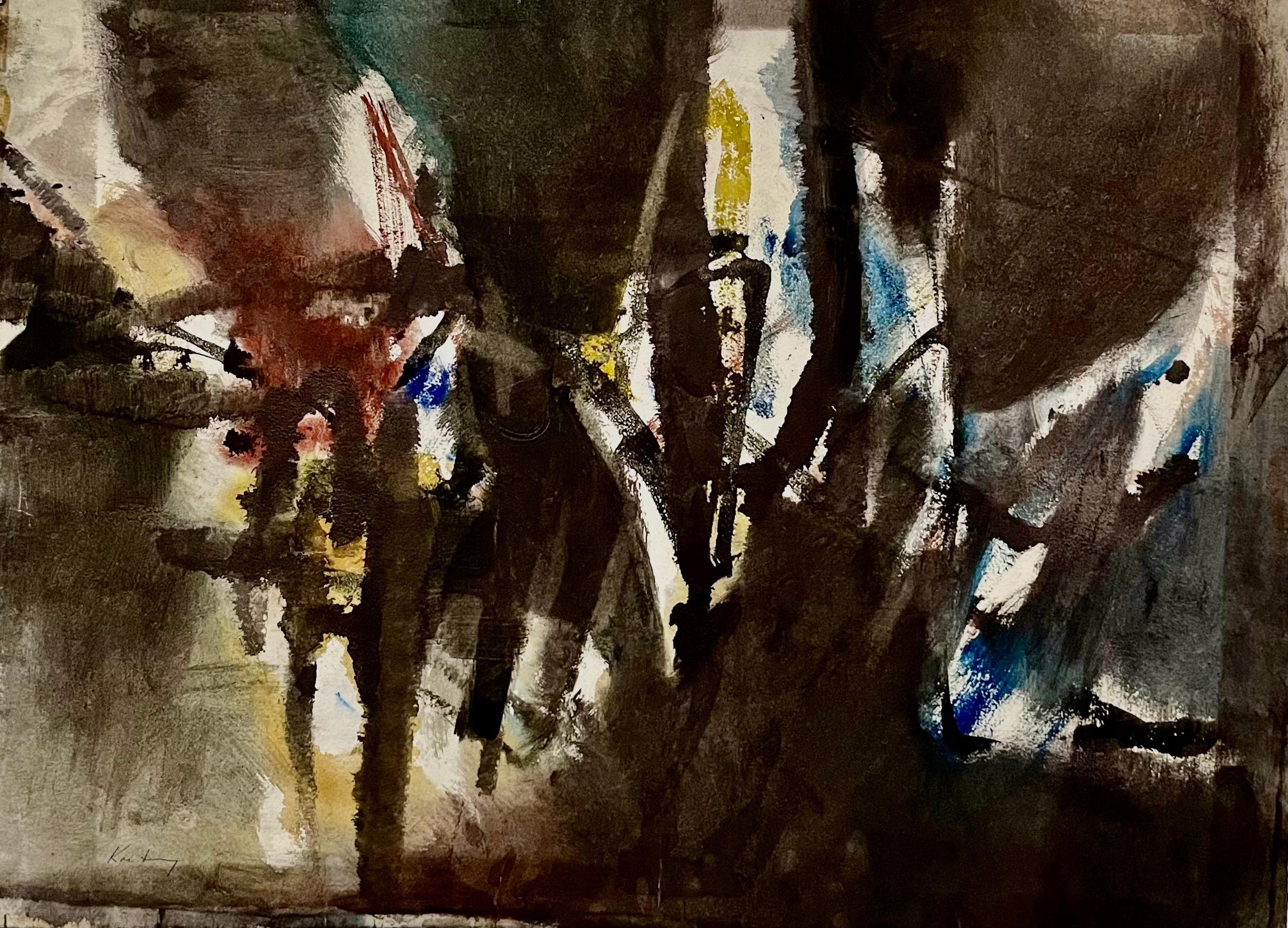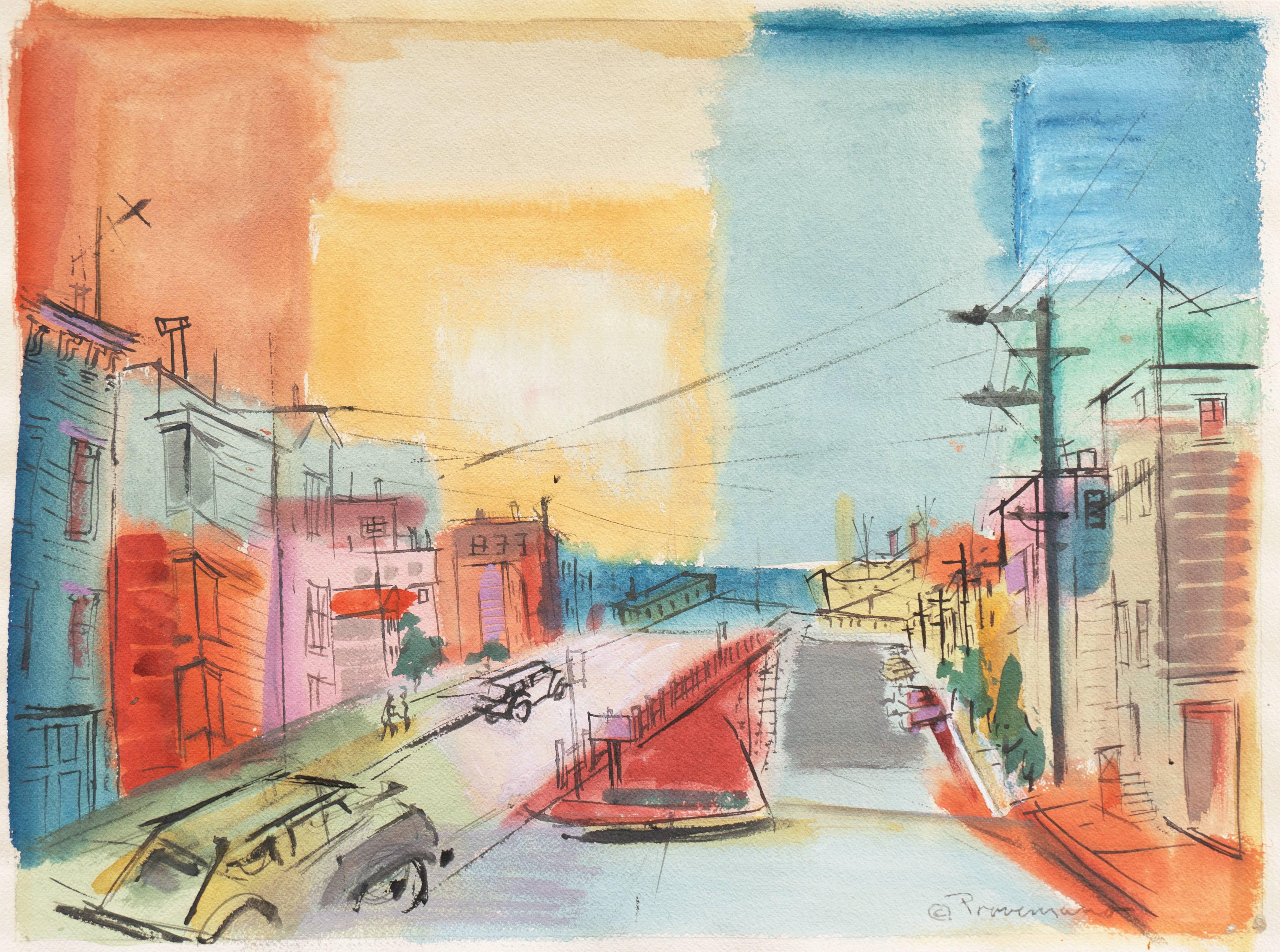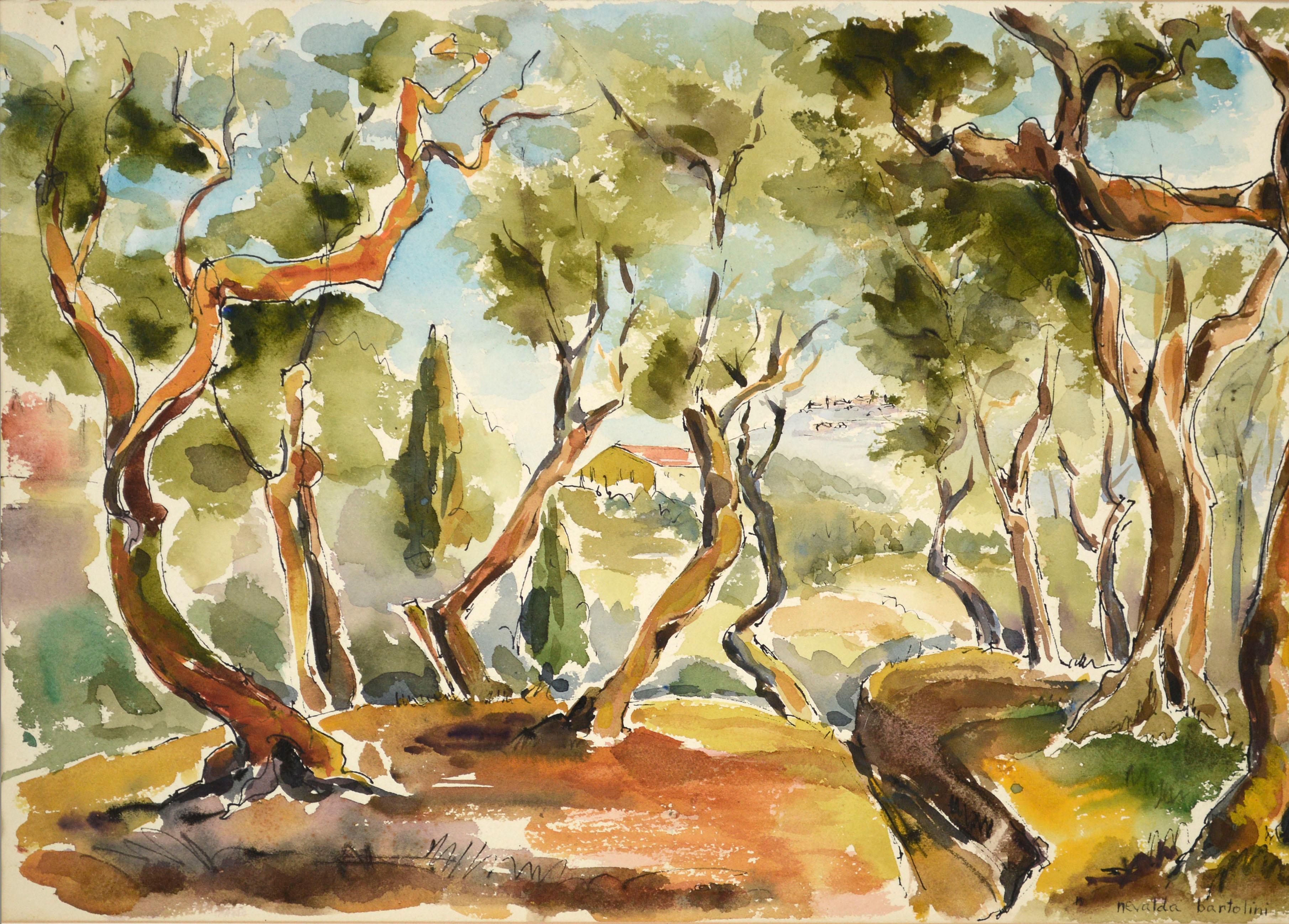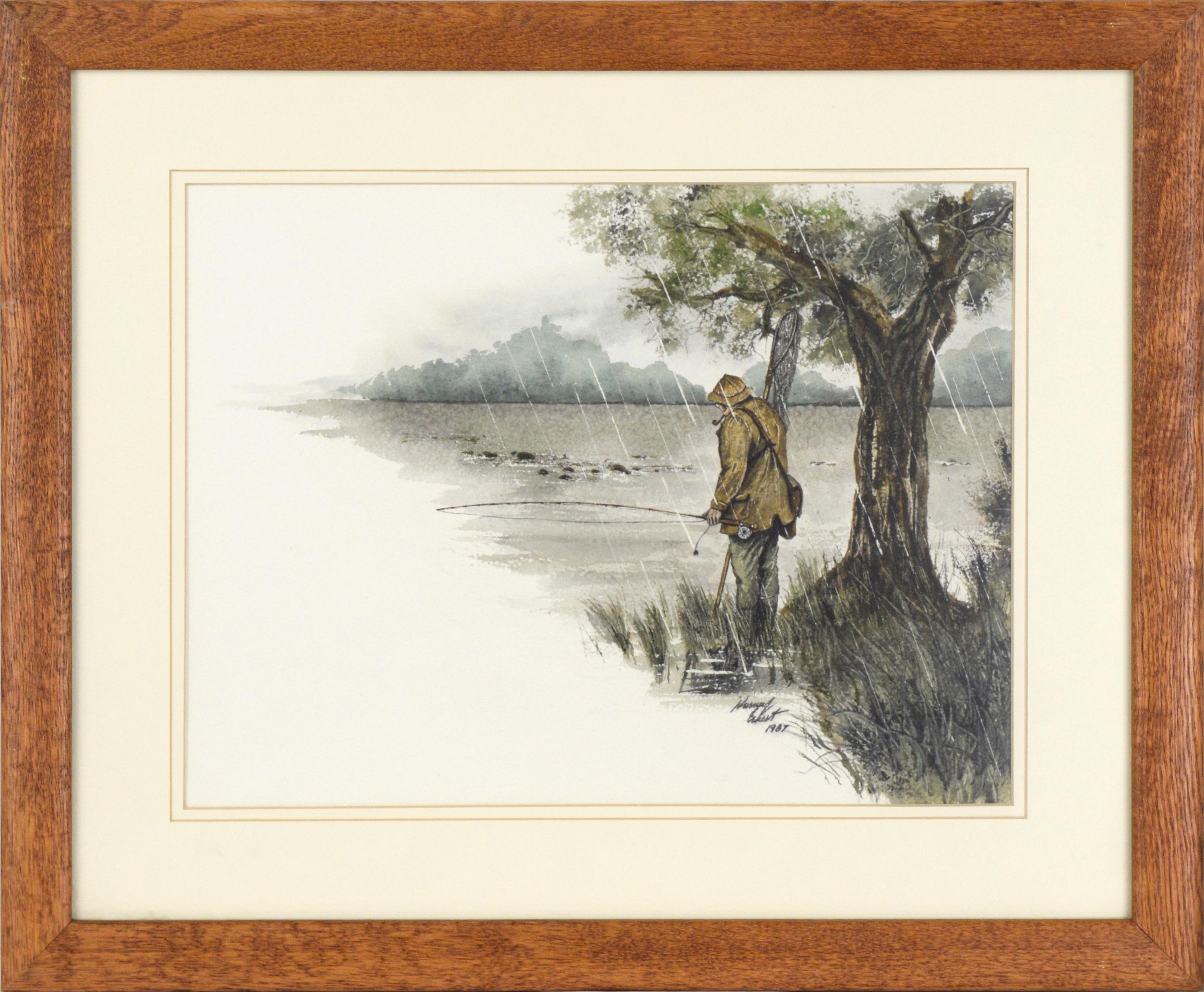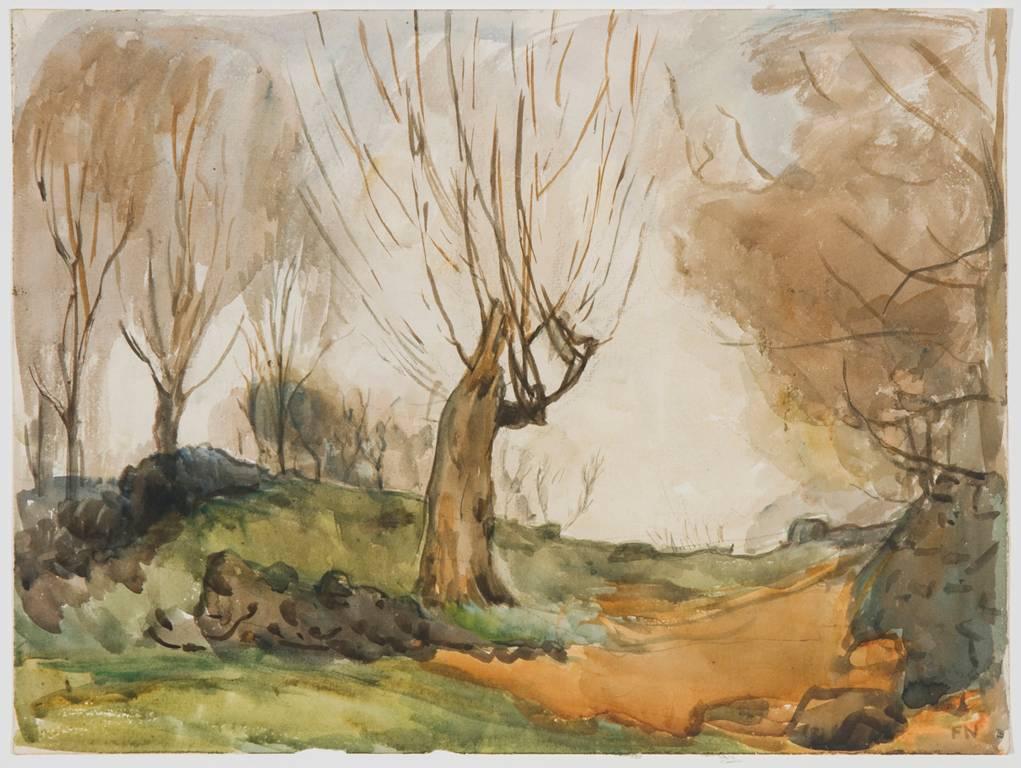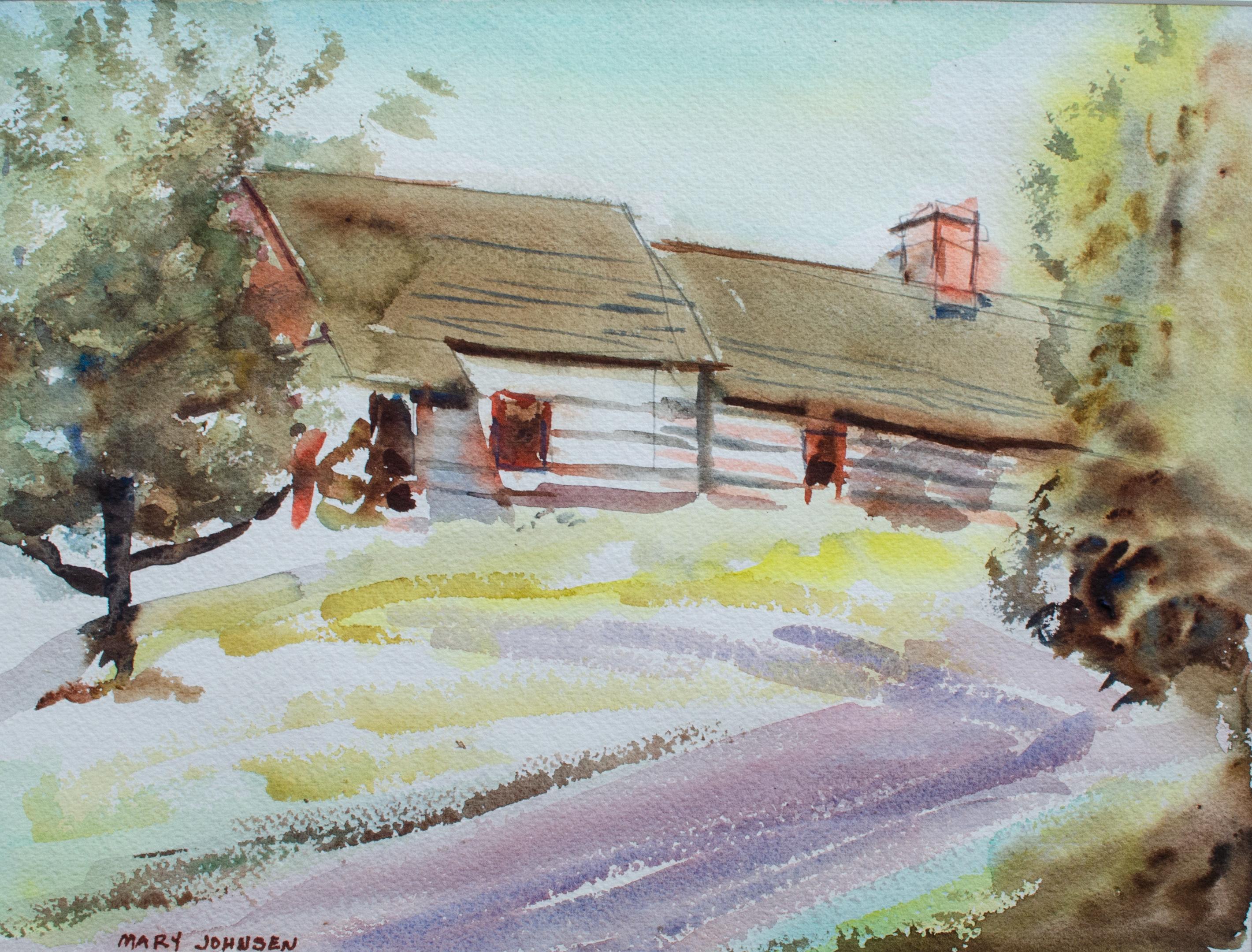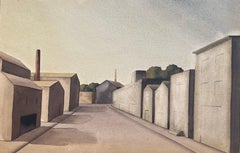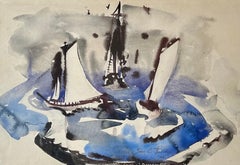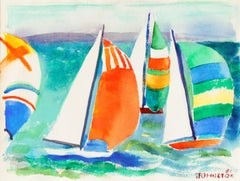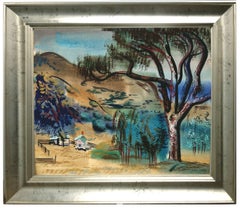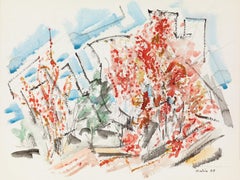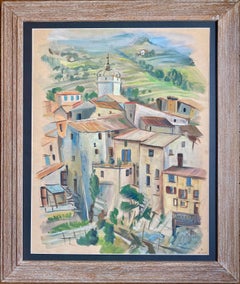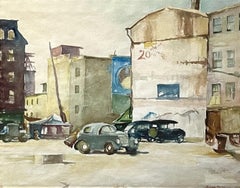
Untitled (Cars)
View Similar Items
Want more images or videos?
Request additional images or videos from the seller
1 of 5
Louis Bertrand Rolston KeelerUntitled (Cars)1940
1940
About the Item
- Creator:Louis Bertrand Rolston Keeler (1882 - 1963, American)
- Creation Year:1940
- Dimensions:Height: 15 in (38.1 cm)Width: 18.5 in (46.99 cm)Depth: 1 in (2.54 cm)
- More Editions & Sizes:15 x 18.5 inchesPrice: $850
- Medium:
- Movement & Style:
- Period:
- Condition:
- Gallery Location:Los Angeles, CA
- Reference Number:1stDibs: LU1859214281432
About the Seller
5.0
Gold Seller
Premium sellers maintaining a 4.3+ rating and 24-hour response times
1stDibs seller since 2022
15 sales on 1stDibs
Typical response time: 19 hours
Authenticity Guarantee
In the unlikely event there’s an issue with an item’s authenticity, contact us within 1 year for a full refund. DetailsMoney-Back Guarantee
If your item is not as described, is damaged in transit, or does not arrive, contact us within 7 days for a full refund. Details24-Hour Cancellation
You have a 24-hour grace period in which to reconsider your purchase, with no questions asked.Vetted Professional Sellers
Our world-class sellers must adhere to strict standards for service and quality, maintaining the integrity of our listings.Price-Match Guarantee
If you find that a seller listed the same item for a lower price elsewhere, we’ll match it.Trusted Global Delivery
Our best-in-class carrier network provides specialized shipping options worldwide, including custom delivery.More From This Seller
View AllCanyon with Bridge
Located in Los Angeles, CA
Gordena Parker Jackson (1900 - 1993), Canyon with Bridge, 1939, watercolor on paper, signed and dated lower right, 17 ½ x 13 inches (sight), inscription verso reads: “Watercolor Comp...
Category
1930s American Modern Landscape Drawings and Watercolors
Materials
Paper, Watercolor
Oil Tanks, Alameda Street, Los Angeles
Located in Los Angeles, CA
Oil Tanks, Alameda Street, Los Angeles, c. 1930-33, watercolor on paper, 14 ¼ x 21 ¼ inches (image), inscribed verso: “watercolor by Ruth Zimmerman 1912 – 1968 / Practice work for sc...
Category
1930s American Modern Landscape Drawings and Watercolors
Materials
Paper, Watercolor
Untitled (Industrial Street)
Located in Los Angeles, CA
This work is part of our exhibition - America Coast to Coast: Artists of the 1940s
Untitled (Industrial Street), c. 1940s, watercolor on paper mounted on illustration board, estate stamp verso (signed by Peter Corbridge, the artist’s son); 14 x 21 inches; unframed
Edgar Corbridge was a Massachusetts-based precisionist painter who mainly worked in watercolor. In 1916, three years after immigrating from England, Corbridge completed a course of study in sign painting at the Fall River, Massachusetts Technical High School and obtained an apprenticeship with the Armour Sign Shop. Throughout his career, Corbridge was mainly self-taught as a fine artist. In 1918, Corbridge received his first recognition as an artist for his entry in a Fall River Women’s Club poster competition. During much of his professional life, Corbridge worked as a self-employed window trimmer and operator of the Corbridge Display Service, supplemented by income from the occasional sale of his paintings. Corbridge gleaned the subjects for his works in and around his home in Fall River, Massachusetts, as well as Provincetown. In the 1940s, Corbridge began to exhibit frequently, including at the annual exhibitions at the Jordan Marsh Company...
Category
1940s American Modern Drawings and Watercolor Paintings
Materials
Watercolor, Board
Blue Ships
By Tom Lewis
Located in Los Angeles, CA
(Note: This work is part of our exhibition Connected by Creativity: WPA Era Works from the Collection of Leata and Edward Beatty Rowan)
Watercolor on paper, 14 x 21 inches unframed sheet, 24 x 30 inches framed, signed and dated lower right
About the Artist:
Born in 1909, Tom E. Lewis studied architecture at the University of Southern California. Beyond that training, Lewis was largely self-taught as an artist. He began watercolor painting during the late 1920s and focused on scenes of California. Lewis was an active organizer of the arts and exhibitor and aided the formation of the Progressive Painters of Southern California. Prior to World War II, the Treasury Section of Fine Arts awarded two commissions to Lewis, the first completed in 1938 for the Hayward California Post Office and the second completed in 1941 for the El Dorado County California District Attorney’s Office...
Category
1930s American Modern Landscape Drawings and Watercolors
Materials
Watercolor
Abandoned Wharf
Located in Los Angeles, CA
This drawing is part of our exhibition Charles Goeller: A Wistful Loneliness.
Crayon on paper, 20 x 12 (image), 22 x 14 inches (sheet), Signed lower right, Matted, but not framed
Ex...
Category
1940s American Modern Landscape Drawings and Watercolors
Materials
Crayon, Paper
Flood
Located in Los Angeles, CA
This drawing is part of our exhibition Charles Goeller: A Wistful Loneliness.
Crayon on paper, 10 ½ x 9 inches (image), 14 x 11 inches (sheet), Signed...
Category
1930s American Modern Landscape Drawings and Watercolors
Materials
Crayon, Paper
You May Also Like
'Spinnakers at Sunset', California Watercolor Association, Pacific Grove Artist
By Lucille Marie Johnston
Located in Santa Cruz, CA
Signed lower right, "Johnston" and dated 1981.
Bearing exhibition label from 17th Pacific Grove Annual Watercolor Competition.
A vibrant Modernist watercolor brimming with color and compressed energy.
Born in California on May 26, 1907, Lucille Johnston settled in Glendale in the 1930's. She exhibited widely including at the California Watercolor...
Category
1980s American Modern Landscape Drawings and Watercolors
Materials
Paper, Watercolor
1940's California Hills Landscape
By Erle Loran
Located in Soquel, CA
Substantial and period mid-century modern American Scene watercolor of the Oakland, California countryside by Erle Loran (American, 1905-1999), 1944. Signed lower right "Earl Loran...
Category
1940s American Modern Landscape Drawings and Watercolors
Materials
Watercolor, Archival Paper
Maples in Autumn Foliage
By John Marin
Located in Bryn Mawr, PA
John Marin’s long and prolific career is best marked by his fervent love of painting and abiding belief that art must relate to lived experiences. His best work strikes a delicate ba...
Category
1940s American Modern Landscape Drawings and Watercolors
Materials
Paper, Watercolor
African American Woman artist Mailou Jones Cezannian Cote d'Azur cubist village
Located in Norwich, GB
If you are interested in African American Art and in Women in the Arts, I will certainly not need to introduce Lois Mailou Jones (1905-1988). Often associated with the Harlem Renaissance, her
work can be found in the collections of the Smithsonian American Art Museum, The Metropolitan Museum of Art, the National Museum of Women in the Arts, the Brooklyn Museum, the Museum of Fine Arts, Boston, Muscarelle Museum of Art, and The Phillips Collection. I am proud to present an original watercolour painting by the artist which dates from the late 1940s or early 1950s.
Jones was born in Boston, Massachusetts to a father who became the first African-American to earn a law degree from Suffolk Law School. Jones's parents encouraged her to draw and paint using watercolors during her childhood. She held her first solo exhibition at the age of seventeen in Martha's Vineyard.
He career began in the 1930s and she continued to produce art work until her death in 1998 at the age of 92. Her style shifted and evolved multiple times in response to influences in her life, especially her extensive travels. She felt that her greatest contribution to the art world was "proof of the talent of black artists". Her work echoes her pride in her African roots and American ancestry.
In 1937, Jones received a fellowship to study in Paris at the Académie Julian, bringing her to France for the first time. The French were appreciative of her paintings and talent and Loïs Mailou Jones was thrilled at the country’s racial tolerance, so different from her reality in the United States.
She summered in France annually from 1945 to 1953, sharing studio with her lifelong friend Celine Marie Tabary in Cabris, France.
It was during one of these sojourns that the lovely work presented here was created.
Our painting depicts the village of Tourettes sur Loup, just north of Nice, in the Provence Cote d'Azur region, about 14 miles from Cabris.
Please note its similarities with her painting "Arreau, Hautes-Pyrénées" in the National Museum of Women in the Arts.
Her portrayal of the picturesque village nestled in a valley evokes landscape paintings by Paul Cézanne, a stylistic influence she acknowledged.
Over the course of the following 10 years, Jones exhibited at the Phillips Collection, Seattle Art Museum, National Academy of Design, the Barnett-Aden Gallery, Pennsylvania's Lincoln University, Howard University, galleries in New York, and the Corcoran Gallery of Art. In 1952, the book Loïs Mailou Jones: Peintures 1937–1951 was published, reproducing more than one hundred of her art pieces completed in France.At the Barnett-Aden Gallery, Jones exhibited with a group of prominent black artists, such as Jacob Lawrence and Alma Thomas. These artists and others were known as the "Little Paris...
Category
Mid-19th Century American Modern Landscape Drawings and Watercolors
Materials
Watercolor, Gouache, Handmade Paper
Modernist Abstract Expressionist Watercolor Painting Bauhaus Weimar Pawel Kontny
By Pawel Kontny
Located in Surfside, FL
Abstract watercolor composition bearing the influence of the earlier color-block compositions of Paul Klee.
Pawel August Kontny, (Polish-German-American artist) He was born in Laurahuette, Poland, in 1923, the son of a wealthy pastry shop owner. In 1939 he began studying architecture in Breslau where he was introduced to the European masters and to the work of some of the German Expressionists, soon afterward banned as "degenerate artists" and removed from museums throughout Germany by the Nazi regime. His studies were interrupted by World War II. Drafted into the German army, traveling in many countries as a soldier, he sketched various landscapes but in 1945, he was captured and held as a prisoner of war in Italy. After the war, he studied at the Union of Nuremberg Architects to help design buildings to replace ones destroyed in the war. He recorded his impressions of the local population and the landscapes through his watercolors and drawings. Pawel Kontny thereafter moved to Nuremberg, Germany, becoming a member of the Union of Nuremberg Architects and helping to rebuild the city's historic center. He soon decided to concentrate on his professional art career. He married Irmgard Laurer, a dancer with the Nuremberg Opera. Pavel Kontny 's career as an artist was launched with his participation in an all German exhibition, held at the Dusseldorf Museum in 1952. He held one-man shows in Germany, Switzerland and the United States. During his trip to the United States in 1960, Kontny became instantly enamored with Colorado, and decided to relocate to Cherry Hills with his wife and two children. He quickly established himself in the local art community, being affiliated for a time with Denver Art Galleries and Saks Galleries. His subject matter became the Southwest. During this time he received the Prestigious Gold Medal of the Art Academy of Rome. His extensive travel provided material for the paintings he did using his hallmark marble dust technique. he also worked equally in pastel, watercolor, charcoal and pencil-and-ink. in a style which merged abstraction and realist styles, influenced by Abstract Expressionist painting and South Western American landscapes. This one bears the influence of Sam Francis. In the early 1960s he was one of only a few European-born professional artists in the state, a select group that included Herbert Bayer (1900-1985), a member of the prewar Bauhaus in Weimar and Dessau, Germany, and Roland Detre (1903-2001), a Hungarian modernist painter. As a Denver, Colorado resident, Pavel Kontny exhibited at galleries and museums throughout the United States, Germany and Japan. There, he was inspired by frequent trips to Native American pueblos in the Southwest, as well as by the study of the Plains Indians of Montana and Wyoming. Over the years Kontny had a number of students and generously helped young artist by hosting exhibitions at his Cherry Hills home. For many years he generously donated his paintings to support charitable causes in Denver. Influences during his European years included German pastelist C.O. Muller, German Informel painter Karl Dahmen and Swiss artist, Hans Erni. In the early 1950s his painting style showed the influence of the Die Brücke (The Bridge), a group of German expressionist artists formed in Dresden in 1905 who had a major impact on the evolution of modern art in the twentieth century in Germany. By the middle of the decade his style incorporated more referential abstraction and total abstraction, resulting in part from his study of Hans Hartung, a German artist based in Paris who exhibited his gestural abstract work in Germany. The American moon landing in 1969 inspired Paul Kontny...
Category
20th Century American Modern Abstract Drawings and Watercolors
Materials
Watercolor, Archival Paper
Modernist Abstract Expressionist Watercolor Painting Bauhaus Weimar Pawel Kontny
By Pawel Kontny
Located in Surfside, FL
Abstract watercolor composition bearing the influence of the earlier color-block compositions of Paul Klee.
Pawel August Kontny, (Polish-German-American artist) He was born in Laurahuette, Poland, in 1923, the son of a wealthy pastry shop owner. In 1939 he began studying architecture in Breslau where he was introduced to the European masters and to the work of some of the German Expressionists, soon afterward banned as "degenerate artists" and removed from museums throughout Germany by the Nazi regime. His studies were interrupted by World War II. Drafted into the German army, traveling in many countries as a soldier, he sketched various landscapes but in 1945, he was captured and held as a prisoner of war in Italy. After the war, he studied at the Union of Nuremberg Architects to help design buildings to replace ones destroyed in the war. He recorded his impressions of the local population and the landscapes through his watercolors and drawings. Pawel Kontny thereafter moved to Nuremberg, Germany, becoming a member of the Union of Nuremberg Architects and helping to rebuild the city's historic center. He soon decided to concentrate on his professional art career. He married Irmgard Laurer, a dancer with the Nuremberg Opera. Pavel Kontny 's career as an artist was launched with his participation in an all German exhibition, held at the Dusseldorf Museum in 1952. He held one-man shows in Germany, Switzerland and the United States. During his trip to the United States in 1960, Kontny became instantly enamored with Colorado, and decided to relocate to Cherry Hills with his wife and two children. He quickly established himself in the local art community, being affiliated for a time with Denver Art Galleries and Saks Galleries. His subject matter became the Southwest. During this time he received the Prestigious Gold Medal of the Art Academy of Rome. His extensive travel provided material for the paintings he did using his hallmark marble dust technique. he also worked equally in pastel, watercolor, charcoal and pencil-and-ink. in a style which merged abstraction and realist styles, influenced by Abstract Expressionist painting and South Western American landscapes. This one bears the influence of Sam Francis. In the early 1960s he was one of only a few European-born professional artists in the state, a select group that included Herbert Bayer (1900-1985), a member of the prewar Bauhaus in Weimar and Dessau, Germany, and Roland Detre (1903-2001), a Hungarian modernist painter. As a Denver, Colorado resident, Pavel Kontny exhibited at galleries and museums throughout the United States, Germany and Japan. There, he was inspired by frequent trips to Native American pueblos in the Southwest, as well as by the study of the Plains Indians of Montana and Wyoming. Over the years Kontny had a number of students and generously helped young artist by hosting exhibitions at his Cherry Hills home. For many years he generously donated his paintings to support charitable causes in Denver. Influences during his European years included German pastelist C.O. Muller, German Informel painter Karl Dahmen and Swiss artist, Hans Erni. In the early 1950s his painting style showed the influence of the Die Brücke (The Bridge), a group of German expressionist artists formed in Dresden in 1905 who had a major impact on the evolution of modern art in the twentieth century in Germany. By the middle of the decade his style incorporated more referential abstraction and total abstraction, resulting in part from his study of Hans Hartung, a German artist based in Paris who exhibited his gestural abstract work in Germany. The American moon landing in 1969 inspired Paul Kontny...
Category
20th Century American Modern Abstract Drawings and Watercolors
Materials
Watercolor, Archival Paper
Recently Viewed
View AllMore Ways To Browse
Italian Fascist Art
Mid Century Charcoal Drawings
Midcentury Modern Nude Art
Pen And Ink Landscape
Charcoal Figure Drawing
Dutch Watercolour
Holland Watercolors
French Artist Watercolors 19th Century
Original Charcoal Drawings Framed
Artist W Lucas
African American Art Watercolors
French Artist Charcoal Drawing
Military Watercolors
Watercolor Cubism
Antique Fox Painting
Nude Man Drawing
Botanical Watercolor Paintings
Miniature Watercolor
